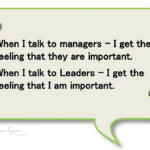Editor’s Note: This post is part of a blogging experiment started by Tim Walker at Hoovers. Tim challenged bloggers to offer up what comes to mind when they see Sherman Tan’s “Break Glass” photo.
For me, the first thing that comes to mind is the Ready-Fire-Aim mentality some organizations seem to follow. They run around, always putting out real or imaginary fires instead of taking the time to do things right…because that might involve personal challenges, difficult conversations, and hard work. Everything becomes an emergency, which allows them to justify dispensing with the required or appropriate process.
Examples:
- The employee who is terminated instead of coached (because there are tons of employees in the job market right now.)
- The benefits and bonuses that are cut or eliminated (without notifying people in advance so they can prepare.)
- Services being cut to customers because companies are willing to sacrifice quality for profits.
- Letters from attorneys (i.e. “sue first, ask questions later”) instead of trying to resolve matters directly.
Businesses (and business leaders) should ask themselves which kind of operation they want to be. The ones that watch the smoke and say, “Let’s see if this turns into a fire”, or the ones that continuously question if they are fireproof. If your company is looking to minimize risk and maximize value, ask yourself the following questions:
- What does your company do better than anyone else?
- In what areas have your stakeholders told you to improve?
- What opportunities exist for your business in the next 12-18 months?
- Are their potential pitfalls to your operational plan?
Sure, every business needs an emergency alarm. We all need to be able to “break the glass” in a true emergency. But if we’re always setting off the alarm because we don’t have the courage, foresight, or training to lead properly, we put our company in serious jeopardy. Because it won’t be long before your employees start ignoring the bell.
0







Tim Walker says
Interesting thoughts, Sharlyn. I’ve seen the endless-fire-drill style of management in action, and you’re right — it stinks.
Good management, best I can tell, addresses both momentary outcomes (the smoke/fire) and durable processes (the fireproofing).
Both, always, at the same time.
But that’s hard. Which is why we see mediocre-to-bad managers and management teams *talk* about process while actually reacting (more or less badly) to momentary outcomes.
Wally Bock says
“Ready-Fire-Aim” (RFA) was a Tom Peters line from In Search of Excellence. It was coined as a counter to the “Paralysis by Analysis” school of management. Peters advocates live trials early in most development processes and urges “a bias toward action.” In that usage, RFA is still good advice.
But you’ve zeroed in on another issue. The tendency to let the urgent drive the important out the door, into the parking lot, and over the hill. It’s something of a management plague these days. You highlight good examples.
There’s another one that I’ve encountered in working with supervisors. It’s applying RFA to documentation. Spot something wrong, reach for the word process and start to document. But as I’ve stressed in the Working Supervisor’s Support Kit and elsewhere, that’s usually not effective.
It’s usually better to let your team member know what you’ve noticed and that you will be watching for similar behavior and documenting it. I’ve found that most of the time, for most team members, that’s all that’s needed to achieve correction without the need for either paperwork or a team member feeling blindsided. As one of my class participants observed, “Most good supervision happens in the cracks in the system.”
ML Vanessa says
Great post! I think that it takes true and genuine leadership to take a close look at your business strategies and make sure they work for your employees and customers. Both need to be appreciated! The questions you mentioned should be in the forefront of your mind and not in the back. Being able to know the answers will keep your company sharp!